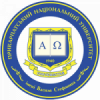The Poetic World of Taras Shevchenko: Principles of Artistic Thinking (to the 200th Anniversary of the Kobzar)
DOI:
https://doi.org/10.15330/jpnu.1.4.9-20Keywords:
artistic mentality, dualistic world, poetry, poetic images, Taras ShevchenkoAbstract
The article deals with the three aspects of Taras Shevchenko’s artistic genius – creative
mentality, dualistic world view and poetic imagery. The poet’s psychological identity
predetermined a unique combination of conceptual, philosophical and aesthetic elements in his
works.
The analysis of Shevchenko’s poetic works, his ‘Kobzar’ collection in particular, reveals the
process of merging ‘personal identity’ with ‘social identity’. At the very beginning of his creative
career, the two principles developed independently – from outer macroworld and inner
microworld; Shevchenko’s mature works offer evidence of their natural synthesis responsible for
the phenomenon of his poetic genius. The analysis of Shevchenko’s shorter poems and his heroic
poem ‘Haidamaky’ shows that dualism is the underlying principle of his poetry: Shevchenko’s
‘social identity’ is presented in terms of mythological consciousness, his ‘personal identity’ (owing
to life circumstances), in terms of existential philosophy.
The analysis of Shevchenko’s artistic mentality, philosophical, mythological, existential, and
aesthetic concepts adds to our understanding of the unique world of the great Ukrainian poet. His
poetry reflects his own knowledge of the world; at the same time, it represents this world in all the
complexity of national and universal phenomena; Shevchenko could only become a great world
writer by becoming a great Ukrainian writer






